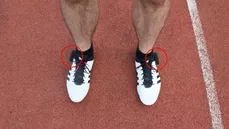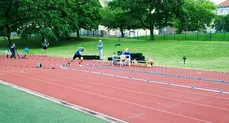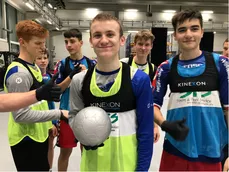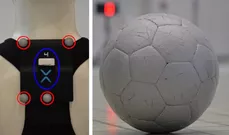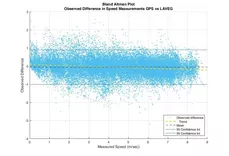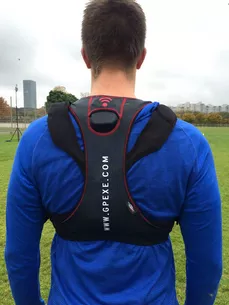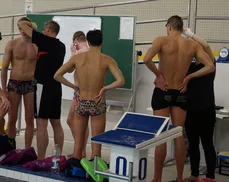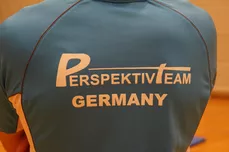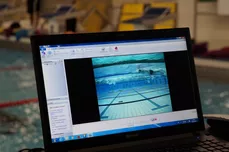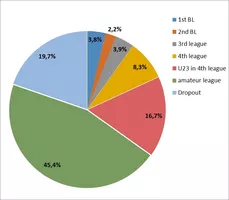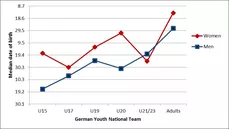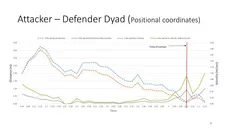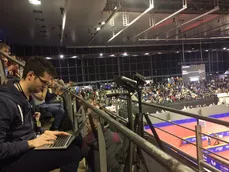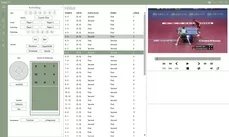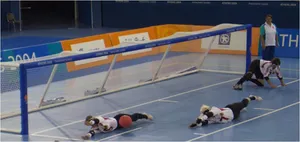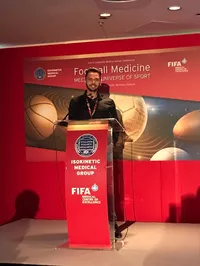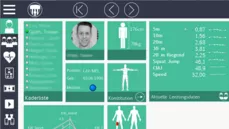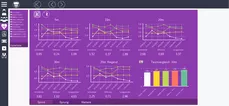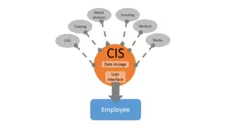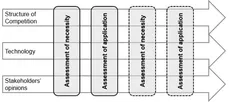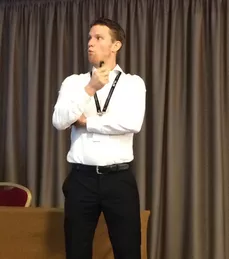- Acquisition of sprint parameters with inertial sensors (IMUs)
- Performance analysis in penalty kick in football
- Validation of Player and Ball Tracking
- Use of data mining methods in game analysis in beach volleyball
- Club Information Systems in Professional Football
- Evaluation of rules and Technological Officiating Aids in Game Sports
- Performance analysis in table tennis
- Injuries in Professional Soccer
- Talent Identification and Development in Soccer
- Performance profile of the national junior squad swimming
- Accuracy of GPS-devices for measuring sport-specific movements
- Match Analysis Goalball
- Automatic image recognition in beach volleyball
- Performance Analysis in Golf Using the ISOPAR Method
- Studying Human Movement Patterns with Self-organizing Maps
- The generation of game strategies in football – training scientific analysis of method, concept and effectiveness
- Innovative software for game analysis in beach volleyball
- ASpoGAMo - Automated sport game analysis model
- Qualitative Game Analysis in Handball
- Development and application of a wind tunnel measuring system to improve body positioning in sledging
The aim of the project "Sensor-based real-time running diagnostics in athletics", which was funded by the Federal Institute for Sports Science (BISP) in 2019, was to generate running-specific performance parameters, such as ground contact times, by viewing sensor-based inertial data. In a previous project, it was shown that distance-specific parameters (e.g. stride length) can be collected by simply measuring positions. Based on this, the possibility of a more comprehensive performance analysis should be developed through the additional consideration of data from inertial measurement units. The developed methodology has already been validated with the results of reference measurements (see publication). It turns out that, for example, ground contact times can be determined precisely. Consequently, there are further possibilities for performance diagnostics in the athletic disciplines.
Video:
https://www.youtube.com/watch?v=StSKHzlmG90
Publications:
Blauberger, P., Horsch, A. & Lames, M. (2021). Detection of Ground Contact Times with Inertial Sensors in Elite 100-m Sprints under Competitive Field Conditions. Sensors, 21 (21). https://doi.org/10.3390/s21217331
This project is about the validation of position detection methods in sports. In a study in Nuremberg, the measurement of a local positioning system (LPS) was compared to motion capturing reference data. Therefore, athletes conducted a sport-specific course (SSC) and small sided football games (SSG), simultaneously tracked by both systems. Furthermore, football shots and handball throws were performed to evaluate ball tracking. The accuracy of the LPS represented the current state of the art for player and ball position detection in team sports. However, ball tracking showed a larger error than player tracking (see publication). In this context, the influence of the positioning of the sensor should be further reviewed.
Publications:
Blauberger, P., Marzilger, R. & Lames, M. (2021). Validation of Player and Ball Tracking with a Local Positioning System. Sensors, 21 (4), 1465. https://doi.org/10.3390/s21041465
Use of data mining methods in game analysis in beach volleyball
Contact: Sebastian Wenninger, Steffen Lang, PD Dr. Daniel Link

Since 2012 game analysis in German beach volleyball has been carried out using two specially developed game monitoring tools. With the BeachScouter, game data can be collected efficiently via a touch surface. The BeachViewer is used for the analysis and presentation of the game data and allows quantitative evaluations to be created and video material to be pre-structured for the qualitative analysis. The previous work was based on the principle of transferring existing expert knowledge into the software. The project aims to use data mining and machine learning methods to extract potentially useful regularities from the existing game data.
Publications:
Wenninger, S., Link, D., & Lames, M. (2020). Performance of machine learning models in application to beach volleyball data. International journal of computer science in sport, 19(1), 24-36. doi: 10.2478/ijcss-2020-0002
Link, D., & Wenninger, S. (2019). Performance streaks in elite beach volleyball - does failure in one sideout affect attacking in the next? Frontiers in Psychology, 10: 919. doi: 10.3389/fpsyg.2019.00919
Wenninger, S., Link, D., & Lames, M. (2019). Data Mining in Elite Beach Volleyball – Detecting Tactical Patterns Using Market Basket Analysis, International Journal of Computer Science in Sport, 18(2), 1-19. doi: https://doi.org/10.2478/ijcss-2019-0010
Promotion video (World Championship Hamburg 2019)
The validity and reliability of the GPEXE-system® was investigated within the scope of an accuracy assessment study. The technology of global positioning systems (GPS) has rapidly advanced over the recent years. Given this convention, team-sport specific GPS-systems have become a common method for assessing the physical demands in professional sports. In order to verify to what extent customary systems are suitable to determine the physical performance under conditions simulating practical use, validation studies are carried out by external providers. GPEXE®, a new entrant in the field of team sport specific GPS-systems commissioned the Department of Training and Computer Science in Sport to undertake an accuracy study. In this respect, the accuracy of the GPS-system was validated by both a laser measurement device (LAVEG®) and a radar system (Local Position Measurement System LPM®). Investigator-in-charge, Daniel Linke, undertook the study within the framework of his dissertation project ‘Performance analysis in team sports based on positional data’.
Research will be conducted into the results of the performance profile of the German Swimming Association within the doctoral project of Christine Hoffmann. These tests include force and flexibility checks on land as well as a multistage endurance test, start and turn analysis and other swimming specific tests in water. On the basis of the newly founded Perspektiv-Team as junior squad of the national team we are interested in establishing a connection between training, test results and competitive performance. First results confirm a reduced base of endurance among the current top athletes compared to the last few decades despite higher swimming speed and higher lactate level.
In the research field “talent” we focus on theoretical concepts of talent identification and development in football. Relative Age Effect, expertise research of top athletes and talent development programmes of elite youth academies and national teams are of particular interest. Goal of the research field „talent“ is the formulation of theoretical concepts regarding talent identification and development as well as the generation of methods in order to assess roster policies in elite youth football. Of special interest in elite youth soccer is the relative age effect (RAE) that emerges from an age-group policy of one year. That policy is responsible for creating chronological age advantages, since there is a one-year difference in age between the youngest and the oldest athletes. This difference in chronological age is referred to as relative age, and its immediate and long-term consequences are known as the relative age effect. One aim of our work is to investigate the impact of the relative age effect (RAE) in German football focusing on the role of the RAE in the transition from youth academy to Bundesliga. A second interesting topic is the approach of expertise research that has already been studied in other domains like chess, mathematics or music. In expertise research it is interesting to study differences of top level players and others, how they reached that expertise and whether there have been any special observations in early ages. Also, the study of possibilities of controlling methods of roster policies in elite youth soccer is of interest. By tracking careers of youth national players and youth Bundesliga players career patterns are generated and help to understand roster policies of youth academies and football associations.
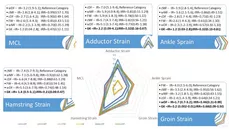
From Epidemiology to Mechanism and beyound
Despite the Bundesliga being one of the top leagues in professional soccer, insight onto the injury characteristic is scarce with only two studies published to date. The aim of the first part of my research program of work is to increase understanding of the epidemiology and injury severity among 1st division Bundesliga soccer players. Specifically, based on information from medial reports, and in addition to traditional variables quantifying injury risk such as incidence-rate, novel dependent variables such as Match-unavilability and Injury-burden will be implemented in a regression model in order to identify playing positions that are of an increase in injury-risk and seasonal variations in injury-risk across the playing season.
The second part of my research project is to empirically test a novel theoretical rational previously published aiming to explore inter-personal interactions between opposing players and the ball leading to contact injuries or high-risk situations in soccer. Specifically, by using a dynamical system theory approach parameters such as inter-personal distance, velocity and angular displacement will be verified, in order to identify key threshold variables by which players might be educated to attune for preventing entering into high injury-risk situations.
In addition, as a physiotherapist, I have serious concerns about the mechanistic approach currently predominate evaluation and treatment following musculoskeletal injuries in clinical practise. This is primarily due to the detachment of the patient from the environment. Addressing this, I am currently working on writing a positional paper highlighting this concern and suggesting how an Ecological Dynamics approach might further enhance the understanding of patient request of help in clinical practise.
Performance analysis in table tennis
Contact: Michael Fuchs, Sebastian Wenninger, PD Dr. Daniel Link,
This project, which is sponsored by the Bundesinstitut für Sportwissenschaft (BISp), is divided in three fields. In the field of theoretical performance diagnostics, mathematical and stochastic models will be checked and extended. The main goal is to develop indices for successful performance in table tennis matches. In the field of practical performance diagnostics methods will be developed and implemented, which support the preparation and follow-up proccesses for competitions efficiently. In the area of methodology of performance diagnostics a customised software for performance analysis will be designed and developed, which takes the requirements and usage conditions of the sport table tennis into account. Because this software influences the work in the other two fields positivly, the main focus at the beginning of the project is on the development of the performance anaylsis software and its implementation for field usage. To have enough material after finishing the software a database will be built up in cooperation with the German Table Tennis Association (DTTB).
Goalball is the only sport in the Paralympics, other than soccer, for blind athletes. There are three players on each side who try to score by rolling the ball into the opposing net, past the defending team. Each player wears a blindfold so that each player is visually impaired equally. There are bells in the ball so that the players can echolocate it when it is moving. Since Goalball is not a professional sport, there are currently no Goalball specific methods for analyzing performance. This project is foundes by the German Federal Institute For Sport Science (2012-2016) and has developed state of the art software, specific to Goalball (“Goalscout” and “Goalview”). The software operates on tablet PCs for intuitive scouting to be efficient for the user. Furthermore it generates positional data from the video frame which leads to precise information.
Publications:
Link, D., & Weber, Ch. (2018). Finding the Gap: An Empirical Study of the Most Effective Shots in Elite Goalball. PLOS ONE, 13(4): e0196679. doi: 10.1371/journal.pone.0196679
Weber, Ch., & Link, D. (2016). Performance analysis in goalball. In P. Chung, A. Soltoggio, W. C. Dawson, Q. Meng, & M. Pain (Eds.), Advances in intelligent systems and computing 392 (pp. 157–160). Cham: Springer International Publishing. doi:10.1007/978-3-319-24560-7_20
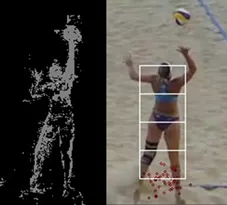
Since 2012 game analysis in German beach volleyball has been carried out using two specially developed game monitoring tools. The aim of this project is to automatically track players and ball positions by means of image detection procedures. If successful, this would substantially reduce effort for coding the video footage, and leave more time for other tasks in the observation, which are currently neglected for time reasons (e.g., block behavior). The project is supported by the German Federal Institute for Sport Science (2012-2014) and is carried out in co-operation with the department of pattern recognition at the University of Erlangen.
Publications:
Gomez, G. Herrera-López, P., Link, D. & Eskofier, B (2014). Tracking of Ball and Players in Beach Volleyball Videos, PLoS ONE 9(11): e111730. doi:10.1371
Link, D. (2014). A Toolset for Beach Volleyball Game Analysis Based on Object Tracking. International Journal of Computer Science in Sport, 13(1), 24-35.
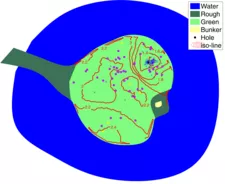
The ISOPAR method provides new opportunities for performance analysis in golf. Based on empirical data the method calculates a topology of average performance with respect to the group of participating golfers. Subsequently, this topology can be illustrated on ISOPAR maps, which are two-dimensional maps of the respective hole with iso-lines superimposed. Iso-lines represent lines of equal number of remaining shots until the ball is holed. Thus, ISOPAR maps are also appropriate to visualize different levels of difficulty on a hole. Furthermore, the ISOPAR method provides the new performance indicators Shot Quality and Shots Saved which account for each unique shot. Shot Quality describes the quality of a shot and Shots Saved describes how a golfer gains or loses advantage on the field with each shot. Using the ISOPAR method, data of the ShotLinkTM database provided by the PGA Tour is analyzed.
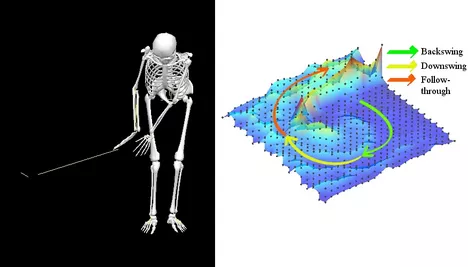
Self-organizing maps are a type of artificial neural network useful for visualizing complex human movement coordination. The visualization of the network output can be enhanced by using colour or a third dimension to visualize data clusters, by adding a trajectory to highlight the time-series progression of coordination or by identifying which areas on the output map represent certain critical phases in the movement. There also exists an interesting opportunity to apply this technique to game analyses.
The generation of game strategies in football – training scientific analysis of method, concept and effectiveness
Contact: Ole Cordes
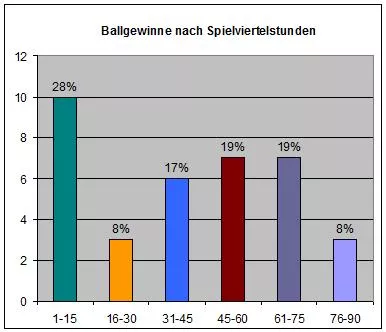
A central task of the coaching team of sports teams is to generate a game strategy in order to optimally prepare their own team for the upcoming opponent. The aim of my work is to accompany the coaches, in particular those of FC Augsburg, in their strategy selection and analysis in the sense of a formative evaluation and to provide them with methodologically sound support.
With the help of guideline-based interviews before the season, as well as before and after each league game, the strategy planning of the FC Augsburg coaching team is reconstructed. An observation system is designed from the interview, which documents and analyzes the tactics shown in the game using systematic (Lames, 1994) and qualitative game observation (QSB, Dreckmann et al., 2009). The results obtained from this are compared with the views of the coaching team in a deviation analysis.
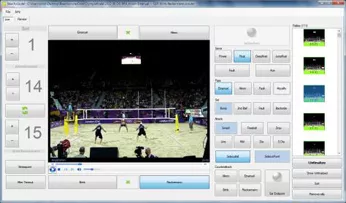
The aim of this project, which is funded by the German Federal Institute of Sports Scoence (2010-2011) is the development and evaluation of two new game observation tools for beach volleyball. The focus lies on optimal information-technological support of the German national teams, particularly in view of the Olympic Games 2012 in London. With the BeachScouter, game data can be gathered in parallel to the contest via touch screen technology. For further analysis the second collection procedure with greater data depth is available. The BeachViewer is used for the analysis and presentation of the game data and allows to create quantitative evaluations as well as to structure video footage for the qualitative analysis. The peculiarity is that characteristic features which had previously to be qualitatively raised by observers can now be automatically calculated from position data.
Publications::
Link, D. & Ahmann, J. (2013). Spielanalyse im Beachvolleyball. Leistungssport, 43(1), 58-63.
Link, D. & Ahmann, J. (2013). Moderne Spielbeobachtung im Beach-Volleyball auf Basis von Positionsdaten. Sportwissenschaft, 43(1), 1-11.
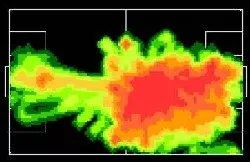
The ASpoGAMo project is funded by the DFG and focuses on the development of a new class of game sport models with respect to soccer. Using positional data of soccer players which are collected using an optical tracking technique, individual movement profiles and performance profiles are created as well as the impact of load on players is studied. Furthermore, the performance of teams is automatically analyzed with respect to actual lineups and teams’ performance in specific game situations. This project is accomplished in cooperation with the faculty of Informatik of the TU München, which programs the respective software.
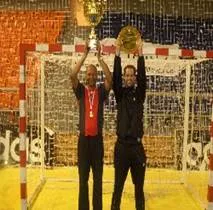
The project, supported by the BISp deals with the qualitative attendance of the youth national handball team, age-group 1990/91, and the coaches Petersen and Dr. Armbruster by the method of the qualitative game analysis. The scientific innovations are the deployment of intermediation-strategies for the social system of the national team and the empiric proof of effects in game analysis. With this innovations the communication between all stakeholders can be improved. Practically the team got the european championship title 2008 and the junior national team got number two on the world championship in 2007.
Development and application of a wind tunnel measuring system to improve body positioning in luge
Contact: Dr. Daniel Link
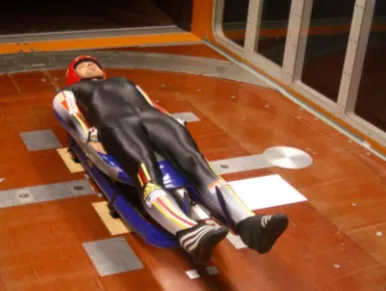
In order to optimize individual body position in sledging a specific measuring system was developed based on the infrastructure of the wind tunnel at the Technical University of Darmstadt. It shows two essential functions: Firstly it contains a prognosis model that allows an estimation of the effects of short changes of the body position on run time. Secondly feedback procedures were integrated that enable one to represent the movement resistance coefficient acoustically through sonification. The measuring system has so far been tested in cooperation with promising athletes at the Olympic training center in Winterberg.
Publication:
Link, D. & Edelmann-Nusser, J. (2012). Drag Coefficient Sonification in Luge Using a Wind Tunnel. International Journal of Sports Engineering and Technology, 6(3), 141-146.
Performance analysis in penalty kick in football
Ansprechpartner: Guilherme Pinheiro
The analysis of penalty kick performance in football has played an important role in recent research. The average number of goals scored by both teams is typically low during regulation time in football matches (i.e., 2.5). As a consequence, the scoring opportunity that is provided by a penalty kick can decide the outcome of a match. In addition, during a decisive penalty shoot-out, the importance to the outcome of the match is even more obvious.
Researchers have approached the penalty kick from a variety of perspectives, including the application of mathematical models to predict penalty-kick performance outcomes, influence of different performance strategies, emotional pressure, the effects of an environment scaled to the body dimensions of the players, kinematic analysis for predicting outcomes or questionnaires. However, there is no scientific consensus about which performance indicators to use and which analysis tool to apply.
Therefore, the objective of this project is to (i) design and validation of an observational system applied to the penalty kicks regarding the aspects related to tactics and technique, (ii) distinguish the profile of successful and unsuccessful penalty kicks in elite football and analyze the key characteristics that demarcate penalty kick strategies, and (iii) validate new performance indicators. Through the observational system future evaluations will be possible, in order to identify the relation of age, gender and performance, also a wide comparative evaluation between players of different nationalities. The use of a reliable method may have implications for scientific researchers, performance analysts and coaches who seek to identify penalty takers’ likely strategy.
PhD Stud. Sportwissenschaften
Technische Universität München
Fakultät für Sport und Gesundheitswissenchaften
Lehrstuhl für Trainingswissenchaft und Sportinformatik
KAAD - Katholicher Akademischer Ausländer-Dienst
Mitglied der UFMG Soccer Science Center (www.ufmgsoccer.com)
Vereinsinformationssysteme im Profifußball
Ansprechpartner: Thomas Blobel
The aim of this study is the software development of a central club information system (CIS) for football clubs. In top level football (similarly in other sports) clubs there are different isolated sources of information, which are generated by different sub-systems and sub-organisations. There are different sources of information (such as club-management, public relations, team-management, medical, athletics… etc.) and every field has its own systems to generate and store this information (Lames, 1997). A Management information system (MIS), normally originating from economy, is used in this work to model a club information system for football clubs. That would mean that all employees in a club can have access to data that is relevant for them. Because there is only little knowledge about this topic, a research cooperation with two youth academies of a first league football club of the German Bundesliga has been started. At the example of performance analysis and medical data, the information system will be developed. Based on this concept, a prototype will be implemented and observed in a field test. A main target of this work will be the development of deeper analyses across different source systems and cross connections between data of different fields (performance analysis and medical).
Already existing systems:
The difference to already existing club information systems is, that the needs of employees and current scientific insights will be more considered. The User Interface is an important part of the software development, because this is one key factor for users to work with this software (and their data) or not. The development follows the purpose: Usability by Design. Therefore it is important, to have a software model, that allows to make changes in design, analysis and graphs as quick and easy as possible, without complex coding. Main aims of such a software model are: - Longterm and deep analysis - Complex filters - Cross-connections between data of different sources - Quick changes (in UI, graphs and analysis) - Integrating of (complex) scientific insights into football practice At the end of the implementation process there should be an operational software-model as prototype that could be used for further development. It could also be used by researchers to implement complex scientific knowledge into one tool. This would mean a big benefit for both sides (researchers and practician), because research would get a platform to present their (to one special field isolated) insights at a bigger platform and the knowledge becomes more practical.
Focus:
- User Interface
- Individual
- Appealing
- Usability by Design
- Longterm and deep analysis
- Filter (age groupe, field position…)
- Cross-connections between Data of different sources
- Quick changes (UI, Analyses…) - Integration of complex science into a tool for sport practice
- A tool to get insights at football practice and develop it (easily) further to fullfill the needs of employees in football clubs.
The video assistant referee in football (VAR), automatic line-calling in tennis or revised regulations regarding headers in youth football – more and more sport associations adapt their rule books to broaden the appeal of competitions, increase player’s safety or to equip match officials with new tools to apply and enforce rules. All those interventions create the need for evaluations regarding two overarching questions: Before an intervention is introduced, one needs to assess its necessity. After the introduction, the focus is on investigating the effects of an intervention. Sport associations currently underestimate the multi-dimensional nature of a comprehensive evaluation process.
The introduction of the VAR in football exemplifies the lack of comprehensive evaluations of those interventions. Applying sentiment analysis to more than half a million of tweets, the chair could show that the VAR is affecting predominantly negative emotions by spectators, despite its positive influence on the overall decision accuracy. Further, associations tend to neglect interdependencies with other Technological Officiating Aids. Already in 2015, Kolbinger et al. raised concerns regarding the cost-benefit ratio of goal line technology and pointed out that the benefit will further shrink after the introduction of a video replay review system.
Besides such customized evaluation designs for specific interventions, the chair also provides universal concepts for the assessment of rule changes. As a main goal of his dissertation project, Dr. Otto Kolbinger developed a framework for the evaluation of Technological Officiating Aids in game sports. The underlying model describes the assessment of such interventions as a multi-disciplinary approach and on-going process (figure 1). For this model, investigating the structure of the competition, and therefore using methods and tools of performance analysis, is essential to estimate the necessity as well as the effects of an intervention. Since the start of this project, the chair was able to act as a main contributor to the discussion of the scientific community as well as to support intervention processes in collaboration with sport associations.
Selected publications:
Kolbinger, O. & Knopp, M. (2020). Video kills the sentiment—Exploring fans’ reception of the video assistant referee in the English premier league using Twitter data. PLoS ONE, 15(12): e0242728. doi.org/10.1371/journal.pone.0242728
Kolbinger, O. & Stöckl, M. (2019). Misbehavior During Penalty Kicks and Goalkeepers Holding the Ball Too Long as Trivial Offenses in Football. Frontiers in Psychology. 10:844. doi: 10.3389/fpsyg.2019.00844
